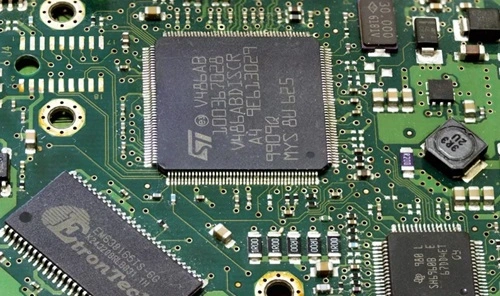Introduction
Within the fast-growing electronics sector, PCB manufacturers are very important as they act as the mainstay of the sector. These are the invisible workers who create every single connector that forms the feature of our digital age. Now, it is high time we initiate ourselves in the sequence of understanding the many-faceted realities of PCB manufacturers – the issues they encounter, the applications they use, and the world they are building.

The Landscape of PCB Manufacturing
PCB manufacturing is a specialized task as it involves not only technical know-how but also high and sophisticated technologies to carry out the manufacturing process and most importantly excellent quality control. There are from small-scale firms that produce in limited numbers for specific customer segments to massive factories that can produce up to millions of boards per year.
Types of PCB Manufacturers
The following are some types of PCB manufacturers:
- Prototype Specialists: Those who manufacture PCBs in small batches and in a short amount of time to develop or test their products.
- High-Volume Producers: These are manufacturers who specialize in large-scale production of PCBs and therefore incorporate high-level automation to contain cost while meeting the market demand.
- Flex and Rigid-Flex Specialists: Some manufacturers mainly deal with flexible or rigid-flex PCBs and these are different from the regular rigid PCBs.
- High-Reliability PCB Manufacturer: These are focused on providing exclusive PCBs to industries that have high standards such as aerospace, medical sector or military sectors.
The PCB Manufacturing Process
The following is the process for manufacturing PCB, let’s dive into it:
- Design Transfer: The process starts by sharing of the PCB design files with the manufacturer’s systems.
- Material Selection: Various materials to be used are selected depending on the design requirements and often they are FR-4 substrate material and copper foil.
- Inner Layer Production: In case of multilayer boards, intermediate layers lay up by making the process of printing, etching and inspection.
- Layer Alignment: All the layers are put in the correct order and are then bonded with heat and pressure.
- Drilling: Vias and component leads require hole making that can be done through using high speed drill bits or lasers.
- Copper Deposition: Copper is deposited on the drilled holes through an electroless deposition method or also known as electroless copper deposition (ECD).
- Outer Layer Imaging: And the outer layer circuit pattern is shown adding the photoresist and etching and this is completed during manufacturing.
- Solder Mask Application: A solder mask is then applied as to avoid development of short circuit between neighboring PCB tracks.
- Surface Finish: HASL, ENIG, or immersion silver can be used depending on the need for the board since they are the various surface finishes.
- Silkscreen: The component designators and other markings are printed by silkscreen printing method.
- Electrical Testing: The individual boards are electrically probed to confirm all the connections on each of the boards are as required.
- Cutting and Profiling: The boards that are used are planed or sawn into the desired dimension and thickness.
Challenges Faced by PCB Manufacturers
Everything has its difficulties, same is the case with PCB manufacturers, they face the following challenges;
1. Keeping Pace with Technological Advancements
PCB producers need to continuously invest in new machinery and procedures in order to remain competitive, as the electronics sector is undergoing rapid evolution. This involves adjusting to:
- As we noticed earlier on we can increase the board densities while on the other hand reducing the feature size.
- Novel EMC materials for high-frequency and high-speed application
- Some of the techniques include computer numeric control and additive manufacturing commonly referred to as 3D printing.
2. Environmental Regulations
Environmentally hazardous substances and procedures are used in the manufacture of PCBs. Manufacturers have to deal with a complicated web of restrictions, such as:
- That means compliance with the norms of the European Union directive RoHS (Restriction of Hazardous Substances).
- EU REACH (Registration, Evaluation, Authorization and Restriction of Chemicals) regulation
- Local environmental protection laws
3. Supply Chain Management
PCB manufacturers’ supply chain includes sourcing several raw materials as well as acquiring necessary production equipment from different parts of the world. Such factors that can disrupt production include; For instance, the current global crisis in the provision of semiconductors. Having an efficient supply chain is essential for:
- Ensuring consistent material quality
- Managing inventory efficiently
- This means dealing with risk arising from events in the world or lack of one product or the other
4. Quality Control and Reliability
They also point to such factors that with rising complexity of PCBs and their application in critical functions, quality and reliability of each board is sacrosanct. This involves:
- The adoption of activities such as AOI and X-ray inspection activities to conduct strict inspection regimes.
- This is done in compliance with the standard practices such as IPC (Association Connecting Electronics Industries) codes.
- Sustaining the efforts that would enhance the quality of the manufacture products as to minimize on defects.
Emerging Technologies in PCB Manufacturing
Leading the way in implementing new technology to enhance their workflows are PCB manufacturers:
1. Industry 4.0 and Smart Factories
One of the more impactful trends That is revolutionizing the PCB manufacturing is known as ‘smart factories’. This includes:
- Another application is using IoT sensors for real-time tracking of machinery as well as other operations.
- AI and machine learning for the predictive maintenance and quality control
- Process optimization and simulation through the use of digital twins
2. Advanced Materials
To satisfy the needs of developing technology, new materials are being developed:
- Abundant materials for the fifth generation and further.
- Thermally conductive substrates in the field of power electronics
- Eco-friendly materials for PCB manufacturing; implementation of biodegradable and Recyclable materials for electronics.
3. 3D Printing and Additive Manufacturing
Although PCB fabrication is still in its infancy, additive manufacturing exhibits potential for:
- Rapid prototyping of PCBs
- Designing of multilayered solid-state electronics
- Customized, low-volume production runs
4. Laser Direct Imaging (LDI)
In many facilities, classical photolithography is being replaced with LDI technology, which offers:
- The increased accuracy of the tool is however consistent with the refinement for the detail features.
- Savings in film and chemicals that can reduce the impact it has on the environment.
- More reserves in terms of design variation
The Future of PCB Manufacturing
Future trends influencing the PCB manufacturing industry include the following:
1. Increased Automation
Increased control through Robotic systems and other forms of automation, will be utilized in the future for manufacturing efficiency and decrease the manpower costs.
2. Miniaturization and Complexity
With the miniaturization of electronic devices, yet the increases in its functionality, PCB manufacturers will need to embrace miniaturization to achieve increased density of features on the boards.
3. Sustainable Manufacturing
The need for sustainability will spur advancements in
- Production techniques that use less energy
- Reusing and recycling PCB components
- Creation of biodegradable electronic devices
4. Integration of Embedded Components
There will be no clear distinction between PCB manufacturing and assembly more so with the increased development of methods where some components can be added directly onto the board during the manufacturing process.
5. Customization and Flexibility
IoT and specialized electronics will require manufacturing companies to manage high volume production while being able to scale to address custom low-volume production requirements in a short amount of time.
Conclusion
Printed circuit board makers rise above as the forgotten component of the electronics industry but carry out the most crucial work of creating the physical foundation of electronic devices which involves a blend of material science engineering and modern electronics technology. Since electronics are in every activity of our lives, the importance of PCB manufacturers does not lose its sense.
From dealing with multiple layers of regulation to supply chain issues to questioning what’s technically feasible, these businesses are always evolving. PCB manufacturing is going through a period of rapid development, and the next few years will feature equally interesting and difficult development trends.
It is often easy to forget about the complex world of PCB manufacturing and assembling as we watch the new smartphone model or a newly developed medical device. These steadily growing companies which mostly work in the background are the driving force behind the technological advancement of the future.


